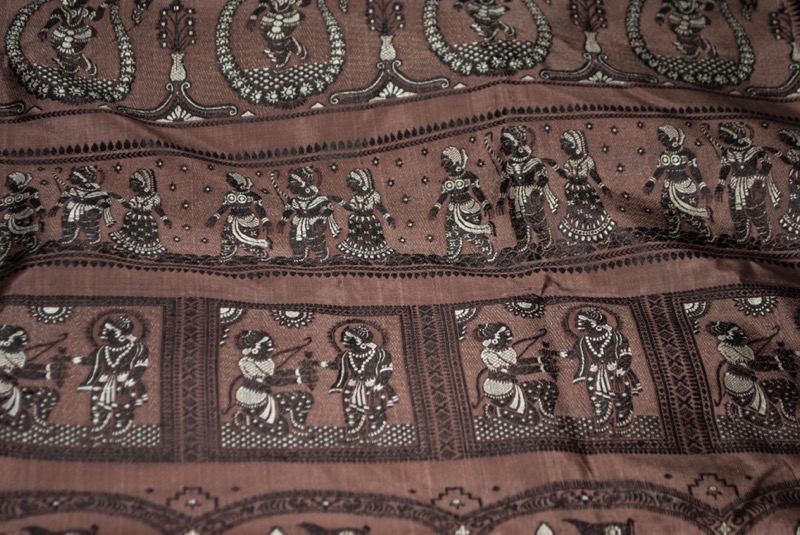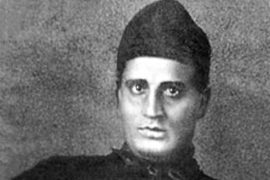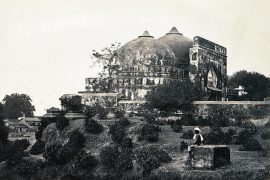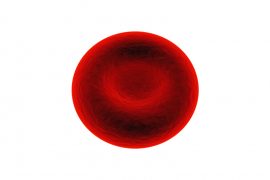Bengal handlooms are well known for their long tradition of excellent artistry and unique creativity in the hands of talented weavers from Bengal. While its beautiful cotton and muslin have received the greatest attention, it is the Baluchari Silk that weaves the narrative of Bengal’s rich history through its threads.
In the seventeenth century, the Dutch, the Portuguese, and the English traders came to Cossimbazar (Kasim Baza), near Murshidabad, as a part of the ‘Silk Rush.’ Cossimbazar soon became the centre of silk production under the encouragement of royals. The best weavers from the country took the opportunity to come to Bengal and created Baluchari sarees, a work of art.
The story of Baluchari goes centuries back. Baluchari was popular during the reign of the Mughals, but only royals fitted themselves in the luxurious drapes of Baluchari.
During the rule of Nawab Murshid Quli Khan, the capital of Bengal was established in Murshidabad (then known as Makshudabad). Many weavers received their workspaces in the village named Baluchar, close to the capital. The art of weaving silk evolved and officially got the title of Baluchari.
While the art of making Baluchari flourished under Mughal patronage, Islam prohibited wearing silk. Murshidabad silk was notable for its purity since there was no cotton or jute mixing, even in the cheapest and coarsest variants. Therefore, it was mainly the demand from the Hindus that kept the use of Baluchari in sarees.
Hindus proudly fashioned Baluchari clothes during religious occasions and functions. Muslim nobles, on the other hand, commissioned beautiful pieces of fabric into tapestry and robes. For a long time, the Murshidabad weavers came from Hindu castes and were hereditary weavers. Today, many Muslim weavers busy themselves and make a living through this traditional art. Ergo, young Muslim artisans from Murshidabad fill up the rooms of weavers’ studios in Bishnupur and weave depictions from Hindu epics.
The silk’s elevated texture, colour coordination, and pictorial magnificence have united to give the Baluchari art unrivalled beauty and sophistication. The graphic subjects, like exquisite works of art, depict the social life and customs of the period. The Baluchari is a one-of-a-kind phenomenon in both idea and technique.
The Baluchari combines Islamic and Hindu elements in the spirit and echoes its visual art, employing the most sophisticated weft methods in body and border. They quickly adapted to changing times to remain in fashion for ages.
During the reign of Nawabs, Baluchari illustrated Persian designs that were prevalent even in Mughal architecture. With the advent of Englishmen, European themes featured on long pallus. Portraits of English officers, illustrations of steam engines, and scenes of men and women smoking and enjoying their glass of wine found their place on the sarees. If a saree could narrate tales from the time, that is what Baluchari art did.
Incorporating human figures in clothes is a notable characteristic of the Baluchari sari. The graphical aspect of these textiles maintained a degree of continuity and indications of cultural assimilation, giving birth to a separate art form that was neither static nor fanatical but accommodating and secular. The artists’ knowledge of political developments is reflected in their natural propensity to emphasise the governing power.
Today, the Baluchari sarees illustrate folk tales, myths of India, portraits, court life of Mughals, and scenes from Hindu epics such as Ramayana and Mahabharata. The designs also find parallels in Hindu temples across West Bengal.
A master weaver from the nineteenth century named Dubraj gets the credit for putting religious texts on sarees. He even signed the sarees that he designed. In the late nineteenth century, the art of making Baluchari saree spread beyond Baluchar and formed the ‘Baluchar Circle.” Dubraj was a pioneer in the group, but after Dubraj’s death, the original Baluchar Circle slowly began to disappear.
In the nineteenth century, West Bengal suffered from calamities, such as famines, floods, and earthquakes; natural disasters eventually destroyed the industry in the area. The flooding of the Bhagirathi River made Baluchar uninhabitable.
The weavers moved their base from Baluchar to Bishnupur, 200 km away. The influence of the terracotta temples of Bishnupur took manifestation in the pictorial tradition of Baluchari sarees. Hence, the sarees even brought the traditions and cultures of the Malla Kings to life.
When the British dissolved the rule of Nawabs, the weavers stopped receiving patronage. Due to political reasons and a lack of financial support, the weavers began moving away from the art. While Bengal silk gained increasing popularity, the Baluchari art declined.
Subho Thakur, a well-known artist, saw the need to revive the rich history of Baluchari craft later in the first part of the twentieth century. He invited Akshay Kumar Das, a master weaver from Bishnupur, to his centre to study the art of jacquard weaving.
Das returned to Bishnupur after learning the craft and worked tirelessly to weave Baluchari at home. After many years of work and planning, the first piece of Baluchari was made in 1957.
Today, the weaving business greatly suffers due to the declining sales of sarees across the nation. As it is not financially viable, many weavers make sarees part-time while selling vegetables or working on the farm. Some worry that the lack of demand may result in a complete shutdown of the handloom units.
-30-
Copyright©Madras Courier, All Rights Reserved. You may share using our article tools. Please don't cut articles from madrascourier.com and redistribute by email, post to the web, mobile phone or social media.Please send in your feed back and comments to editor@madrascourier.com











